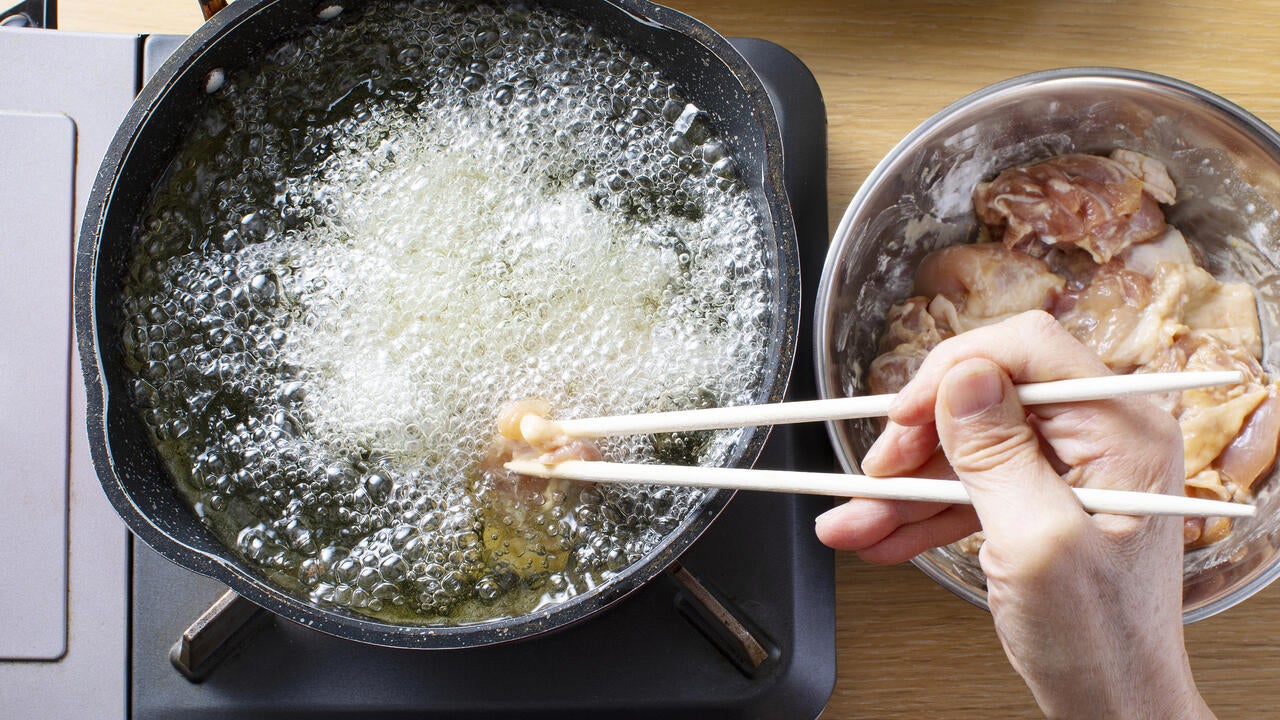
How wet chopsticks hitting hot oil advance our understanding of physics
Researchers find the physics of frying food far more complex than anticipated

Researchers find the physics of frying food far more complex than anticipated
By Media RelationsCooks throughout Asia put moist bamboo chopsticks into oil in a frying pan, watching the bubbles that form and listening to the sizzling sound they make as they burst to gauge the perfect cooking temperature. An international team of researchers used the technique as inspiration to learn about the complex physics behind wet chopsticks hitting hot oil.
“Many cookbooks teach this technique and it is widely used, but when we searched the academic literature, we couldn’t find any detailed scientific explanations,” said Zhao Pan, a mechanical and mechatronics engineering professor at the University of Waterloo. “We set out to provide one.”
“Members of our team speak seven different languages, but we couldn’t find any scientific investigation, and no one knows the history of the trick,” added lead author Akihito Kiyama of Utah State University.
The project involved experiments placing wet paper, moistened chopsticks and water droplets in hot oil, with the results recorded using sensitive microphones and high-speed cameras.
Researchers found the physics of frying food far more complex than they anticipated. To simplify their tests, they used moist pieces of paper and, later, water droplets as stand-ins for actual food.
“We found three distinct types of bubble events in our experiments: an explosion cavity, an elongated cavity and an oscillating cavity,” said Tadd Truscott, a professor at King Abdullah University of Science and Technology in Saudi Arabia.
Explosion cavities form when a water droplet enters hot oil and undergoes a micro-explosion due to the sudden temperature increase, forming a vapour bubble that can rupture the surface of the oil. Elongated cavities explode without rupturing the surface, while oscillating cavities are created when a water droplet is submerged, undergoes a multi-step explosion process and begins to oscillate before breaking up into numerous small bubbles.
The results have potential applications in scientific fields such as acoustic sensing of aerosol generation to inexpensively measure air pollution, new technology the researchers are now working on.
Pan, director of the Pan-Lab: An Interdisciplinary Kitchen for Fluid Physics at Waterloo, said the tests also showed that the trick used by deep-frying cooks works quite well.
“This simple eye and ear measurement is accurate to within about five to 10 per cent, which is pretty good when we consider that a typical temperature for frying food is higher than 150 degrees Celsius,” Pan said.
A paper on the project, Morphology of bubble dynamics and sound in heated oil, appears in the journal Physics of Fluids. Rafsan Rabbi, Som Dutta and John Allen also contributed.

Read more
Here are the people and events behind some of this year’s most compelling Waterloo stories

Engineering master's student Nayeema Nonta (left), one of the three paper authors, and her supervisor, Dr. Sirisha Rambhatla, in a large server room with the computer power needed to develop their new LLM training technique. (University of Waterloo)
Read more
Waterloo researchers develop highly efficient AI training system that paves the way for cheaper, greener “intelligent partners”

Read more
Engineering researchers team up to tackle the plastics pollution problem with microbial innovation and engineering design
The University of Waterloo acknowledges that much of our work takes place on the traditional territory of the Neutral, Anishinaabeg, and Haudenosaunee peoples. Our main campus is situated on the Haldimand Tract, the land granted to the Six Nations that includes six miles on each side of the Grand River. Our active work toward reconciliation takes place across our campuses through research, learning, teaching, and community building, and is co-ordinated within the Office of Indigenous Relations.